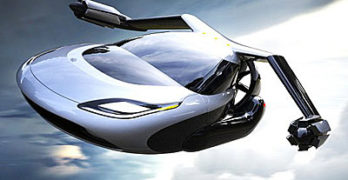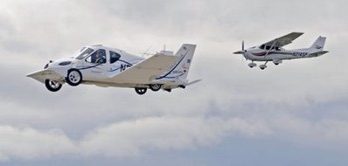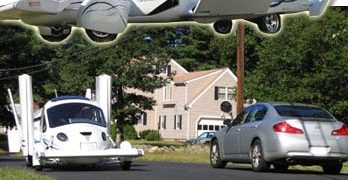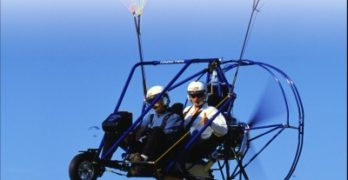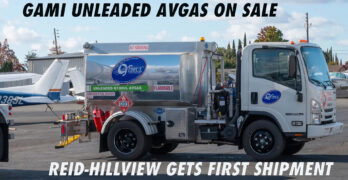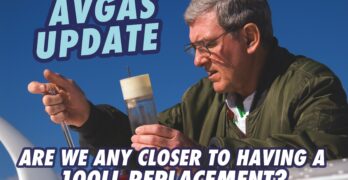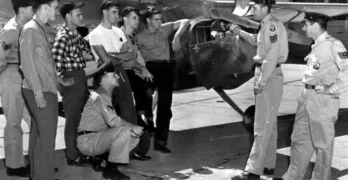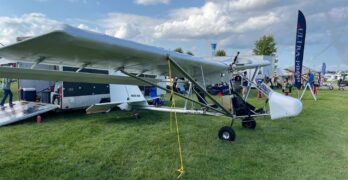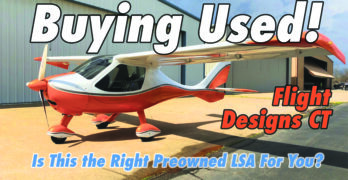In a familiar theme, a Chinese company has acquired an American aircraft company. Past purchases include Cirrus Design, Mooney, Glasair, and Continental Motors, among others.
This time news reports say a Chinese company bought a company from the light aircraft space: Terrafugia, maker of the Transition flying car, or as they prefer to call it, a roadable aircraft.
Geely is an automaker based in Hong Kong that bought the famed Swedish car maker, Volvo.
The Massachusetts airplane developer has put out slick video presentations of their newer-still model, the TF-X, a hybrid electric variation (video at bottom). I suspect it is this newer entry that has both automobile makers excited.
Terrafugia first announced their Transition roadable airplane in 2006, flying a proof-of-concept aircraft in 2009 along with a demonstration before attendees of EAA AirVenture Oshkosh in 2013. The Massachusetts company built a second-generation Transition prototype in 2012.
Search Results for : transition
Not finding exactly what you expected? Try our advanced search option.
Select a manufacturer to go straight to all our content about that manufacturer.
Select an aircraft model to go straight to all our content about that model.
Terrafugia — Transition (09/11)
Terrafugia — a name that means escape from Earth — is the creator of the “roadable airplane” called Transition. The New England company has attracted wide media attention for its unique effort in the LSA space. With a growing order book, Anna Dietrick helps us learn where the project stands as of AirVenture 2011. Come have a look.
Transition Program Hits the Road…er, Sky
The ex-MIT whiz kids who formed their own company (Terrafugia) have just finished the fourth and final round of flight and ground testing on the Proof of Concept Transition® (POC) at Plattsburgh International Airport in upstate New York. *** A total of 28 flights were made, designed to evaluate handling, climb, performance, take-off and landing. *** “The Proof of Concept validated three basic goals,” says a company release. “We could design/build a roadable aircraft, drive it and fly it.” *** The tests will lead to several engineering and design modifications which will be incorporated in the Beta Prototype, targeted for 2010. If all goes according to plan, the company intends to make its first customer delivery in 2011.
“New Wave” LSA, Part 1 — Terrafugia Transition
Recently, I visited three brand-new LSA developments. All are American. All are propelled by young engineers and enthusiasts. All are remarkably sophisticated. All companies have been successful at raising funds. And, perhaps most notably, all projects were started specifically because of the emergence of the Light-Sport Aircraft rule. *** All three are emphatically not reconfigured European microlights or vintage American designs…not that I have any objection to such aircraft. I am simply encouraged by fresh new designs from fresh young faces. Aviation needs that! *** My first example (others soon) is the Terrafugia Transition. Called a “roadable aircraft” rather than a “flying car,” Terrafuguia does what others have done but in a new, far more practical way. Compared to the Transition, Molt Taylor’s Aerocar is so last century. Transition folds its wings without leaving the cockpit. The company has produced a professional video that explains the concept and the award winning people behind it.
Transitioning?
A primer for ultralight pilots transitioning themselves and their machines
Ultralight pilots flying legal Part 103 single-place ultralights are not affected by the sport pilot/light-sport aircraft rule. The rules of FAR Part 103 remain the same. Current and future ultralight pilots are free to enjoy those freedoms. If they choose to become sport pilots at a later date, any training logged as a registered ultralight pilot can be counted toward the training requirements for a sport pilot certificate. The rule pertaining to legal ultralight vehicles also do not change.
The sport pilot and lightsport aircraft (SP/LSA) rule is now officially part of the American aviation culture. Some of us who fly Part 103-legal ultralights will continue to be ultralight pilots. Others who fly two-place or overweight machines must eventually transition themselves to sport pilot status and their machines to light-sport aircraft status to remain legal.
With the rule now final, we’ll address the requirements for those ultralight pilots and instructors wishing to transition themselves and their machines.
GAMI Releases G100UL Into the Wild
This week GAMI, which developed the STC-approved G100UL high-octane avgas replacement, announced that a shipment of the fuel has been delivered to the Reid-Hillview airport in California. A load of 7500 gallons will be sold by the county-owned fueling service via truck. Currently, the only fuel available at KRHV is mogas, Jet A and Swift’s UL94 unleaded. Cost of a gallon of G100UL is expected to be close to what the County of Santa Clara is selling UL94 now, $7.59. Note that fuel prices in this part of California vary greatly, from $5.37/gallon at Tracy to $10.87/gallon at San Jose.
G100UL received supplemental type certificate approval for all gas engines in fixed-wing aircraft so certified airplanes will need this STC to legally use the fuel. Experimentals do not require the STC. To encourage aircraft owners to try G100UL, GAMI is offering the STC for free at a rollout event this Saturday, November 2, from 9am to 6pm, and will “provide the services of an I.A.
Where Are We On Unleaded Avgas?
Industry wide progress on a so-called drop-in replacement for high-octane avgas always seems to go in fits and starts. Lots of noise then a period of silence. Is anyone actually doing something on this, you may ask? The answer is most definitely yes, but the recent news has come more in dribs and drabs than the full-firehose effect we expect around the major airshows.
But let’s start here. The other shoe dropped on the sale of leaded avgas in California. There had been a legal agreement (a consent decree) that depended on the availability of an alternative to 100LL but now the transition is being forced by new legislation signed into law this month that “would prohibit an airport operator or aviation retail establishment, as defined, from selling, distributing, or otherwise making available leaded aviation gasoline to consumers on or after January 1, 2031.” Coincidentally, the End Aviation Gasoline Lead Emissions (EAGLE) program has as its goal a replacement in place by the end of 2030.
Flying Clubs as Another Route to Affordable Aviation
In the previous article, I explained how high levels of flight activity can make access more affordable and, for most people, how that would likely be achieved only through some form of shared ownership/use. The use of the term “shared ownership/use” is deliberate because not everybody really wants or feels the need to “own” something they use but, perhaps, believes that there is no other realistic or safe alternative.
This article is based on a close examination of the reasons people give for not being open to any form of sharing and looking at how those barriers might be removed. It will also try to address the second, less discussed, part of affordability, which is “accessibility” to shared use aircraft. There is little benefit to being able to afford what does not, essentially, exist. A good, but somewhat parallel, example of this has been the original iteration of Light Sport Aircraft and Sport Pilot Licenses.
Dragonfly Rancher Gets New Life in Florida
There is a two place tandem high wing light plane that looks a little like a single engine AirCam that has been knocking around for over a decade in, of all places, the hang gliding community. This sturdy craft, the Dragonfly Rancher, has been used to tow hang gliders to altitude without the necessity of plunging off a cliff. Developed by Bobby Bailey in the 80s, the Dragonfly earned its position as the premier hang glider tower when Bill Moyes invented a reliable and effective release mechanism for towing use.
The Dragonfly Rancher has also been put to agricultural use, as a ranch surveyor and even a spot sprayer. This workhorse has had almost a cult following, with many pilots taking advantage of its beefy construction to perform impressive aerobatics on YouTube. It is designed to take +6 to -2 Gs.
The Dragonfly Rancher design was owned by Pittman Air, LLC.
Buying Used: Flight Design CTs
If you’ve ever shopped for a used sport plane you’ve probably noticed there are almost always a number of Flight Design CT series LSAs up for sale. This shouldn’t be surprising since Flight Design was an early player in our segment of aviation, and in the past two-plus decades the company has sold more than 400 CTs in the U.S. alone.
The planes have proven popular, in part, due to their speed (for an LSA), having a cabin wider than a Cessna 172 and their generous payloads. This article is an introduction to the various CT models, their flight characteristics, and advice for a pre-buy inspection and ownership.
Development
The first CT was produced in Germany by a company that began with hang gliders and paragliders in the 1980s and ultralights in the early 1990s. Now part of LIFT Air Gmbh, Flight Design has faced financial woes over the years, having gone into receivership, and then challenges caused by the war in Ukraine where the aircraft were being built.
- 1
- 2
- 3
- …
- 19
- Next Page »


